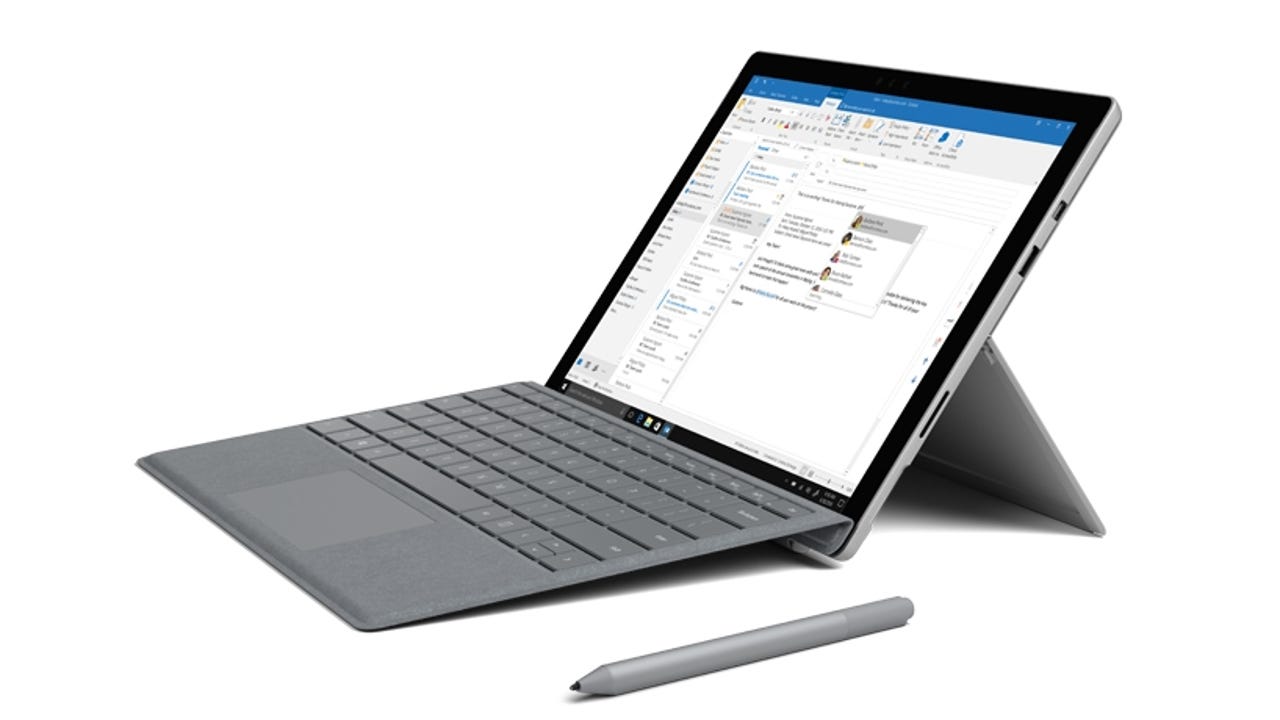Microsoft Surface Pro with LTE Advanced: Is built-in mobile networking worth the price?


The Surface Pro with LTE Advanced is indistinguishable from its non-LTE sibling unless you look behind the kickstand.
The newest member of Microsoft's Surface family is, technically, an incremental upgrade.
From a hardware perspective, the Surface Pro with LTE Advanced is almost indistinguishable from its non-LTE sibling, the Surface Pro (2017), which in turn is remarkably similar to the 2015-vintage Surface Pro 4.
A close inspection of the exterior reveals one difference. Behind the kickstand, the Surface Pro with LTE Advanced includes an expansion slot that's about 5/8 of an inch wider than its non-LTE cousin. That's just enough room to squeeze a nano SIM tray alongside the familiar MicroSD memory card slot.
This nano SIM tray, beneath the kickstand, is the only obvious difference in this Surface Pro model.
Two additional hardware upgrades are strictly internal. A Cat 9 modem supports cellular connections up to 450 Mbps in speed, and an embedded SIM allows connections to pay-as-you-go data services without the need for an external SIM card. GPS support is also included, making this a useful option for any application that requires precise location information and navigation.
Featured
Those tiny bits of extra hardware come at a cost, of course. My review unit, with a 7th Generation Core i5 CPU, 8GB of RAM, and a 256 GB SSD, has a list price of $1,449, which is $150 more than the equivalent non-LTE configuration at $1,299. This model is the only one available through consumer channels.
An additional LTE model, with the same CPU but 4GB of RAM and a 128 GB SSD, is offered through commercial channels only for $1,149, the same $150 premium over the $999 price tag of the non-LTE device. (Those two configurations are the only Surface Pro options available with LTE Advanced capabilities.)
In either case, both the Type Cover and the Surface Pen are extra-cost options.
Microsoft announced the Surface Pro with LTE Advanced last November, and it's been available through commercial channels for several months. Starting today, both models are available for pre-order from the Microsoft Store, and should be available for shipping by May 1, 2018.
I've spent the past week with a Surface Pro with LTE Advanced equipped with a T-Mobile SIM and was able to remain productive even when no Wi-Fi connection was handy. The LTE modem connected quickly whenever I was out of Wi-Fi range, offering data speeds that were dramatically faster than the saturated public Wi-Fi signals normally available in my neighborhood coffee shop.
Also: Microsoft's steady retreat from consumer products is nearly complete
When I swapped in a Verizon SIM card that I had previously activated in a phone, Windows 10 detected it immediately and connected without any additional setup.
I was not able to test the eSIM card. Although the extra SIM showed up properly in the Windows 10 Settings app, the Mobile Plans app complained that no services were available in my area. (Microsoft is looking into the reasons.)
Windows 10 offers native support for cellular connections with straightforward setup.
Had I been able to make that connection, I would have paid dearly for the privilege: $4.99 for a one-day pass of up to 200 MB; $13.99 for a 1GB pass, good for 15 days; or $29.99 for a 3GB pass, valid for 30 days. Those pay-as-you-go rates don't require a contract or any agreement beyond the one-time payment.
For occasional mobile use, of course, an internal cellular modem isn't necessary. Most mobile plans and modern hardware support tethering via Wi-Fi, which allows you to turn your phone into a hotspot using the data you've already paid for. Likewise, most carriers offer standalone MiFi devices that give you a portable hotspot you can share with multiple devices.
But setting up those temporary hotspots adds a degree of friction that cuts into productivity for anyone whose work has them out of the office most of the day. And having a built-in cellular modem offers granular software controls over data usage that aren't available on a tethered connection. That could significantly reduce data costs.
A device like the Surface Pro with LTE Advanced would be easy to justify for an insurance adjuster who needs to fill in claim reports and upload them from the field. Having the Surfce Pen to sketch, draw, and annotate would also be a plus for that type of work.
CNET: Microsoft Surface Pro with LTE Advanced review: A more connected Surface, no Wi-Fi required
Like its non-LTE siblings, this Surface Pro has a distinctive design that will probably be off-putting for a writer or spreadsheet jockey. The latest incarnation of the Surface Type Cover offers a pleasant typing experience, and the precision touchpad is responsive and smooth, but the combination can be awkward for anyone who demands the stability of a conventional keyboard on a clamshell laptop.
With that caveat aside, the Surface Pro with LTE Advanced has plenty to recommend it. It's impressively light, and the ability to sign in with Windows Hello facial recognition is downright magical.
Microsoft claims that this device can play back video for more than 12.5 hours with LTE enabled. In my productivity-focused testing, I found that this device consistently got between 6.5 and 7.5 hours of continuous work.
In practice, I found myself using the Surface Pro with LTE Advanced in bursts of activity throughout the day. At the end of a 10-hour day, it typically showed more than 50 percent of battery capacity remaining.
Is the built-in LTE connectivity worth a $150 premium? For someone whose work depends on fast, reliable access to mobile networks without the hassle of hotspots, it's worth considering.